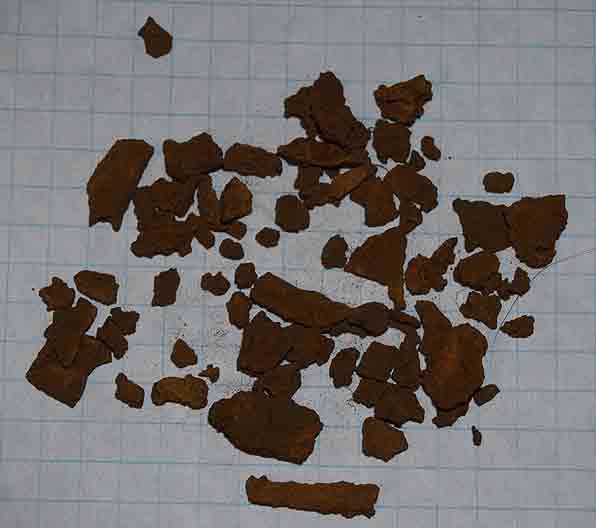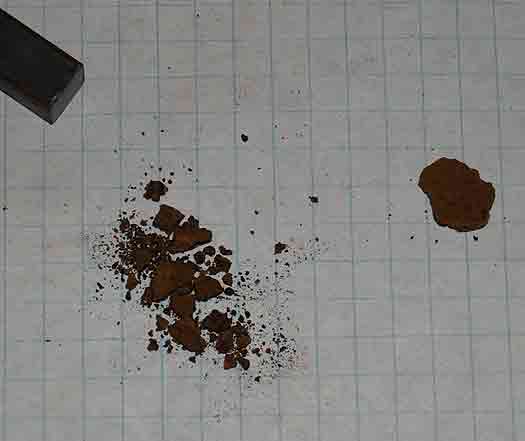
This is bog iron ore that was gathered by Dr Birgitta Wallace right off the archaeological site at L'Anse aux Meadows during excavations there in the early 1970's. Outside of possible variations due to environmental changes since 1000 AD, this can be considered to be exactly the same material that would have been use to smelt iron by Leif's crew. This material has been tested and found to be quite pure, in the range of 89 % Fe2O3 after roasting (62% iron content).
The grid is a standard 1/4 inch graph paper, 6.5 mm squares. The majority of the pieces range from 5 to about 20 mm. This size is ideal for addition to the smelter without any further crushing. The sample seen has been air dried, but has not undergone any roasting (so chemically it would be FeOOH).

The test was made by taking pieces of the bog iron ore and placing each inside a plastic bag. An attempt was made to use pieces as close to 10 mm across as possible from the sample. A standard piece of 3/8 inch square bar was used as the plunger (9.5 mm). The metal bar was pushed against the top of the sample by hand, and the scale observed. As each piece reached its 'crushing' pressure, the measurement on the scale was recorded. This point was easily distinguished, as there would be a loud sound and the scale numbers would suddenly drop.

Test Results - In measured kilograms
(4.2)
3.5
3.5
1.9
1.5
1.5
1.2
{.9}
{.8}
(6)
Discard the two top and bottom measurements, as they are significantly outside the range of the others. The bottom two numbers remaining are also not used. These pieces wer both narrow, and also had a distinctive 'tube' structure, and thus a hollow core which made them much easier to collapse.
Average : 2.2 kg
Converted to kilograms per square centimeter : 2.4
The numbers on the upper range may prove more accurate. These were larger pieces, more in the range of 15 mm wide. The numbers at the bottom end of the range are from pieces closer to .5 mm wide (thus really represent twice the force over area as recorded.
There is a huge range of both chemical and structural variations that can be observed in the material called locally 'bog iron ore'. Wide ranges in specific environmental and geological conditions account for the many differences in the size, density, and gathering methods seen.
The focus of the DARC team remains on the type of material available in Vinland, the bog iron ore that would have been used for the first iron smelting in North America by the Norse.




















No comments:
Post a Comment